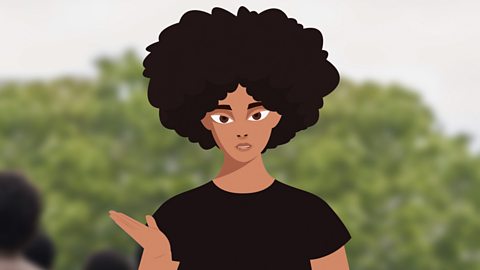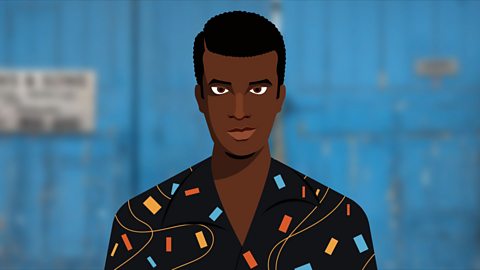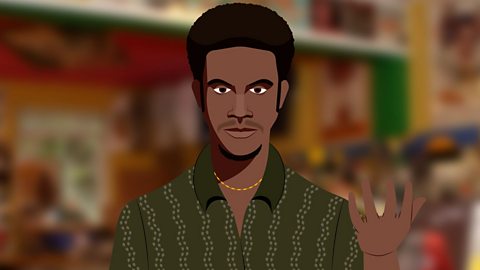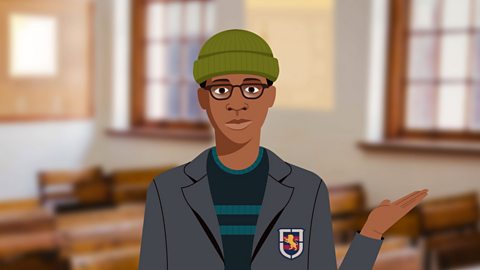Video summary
In his own words Leroy Logan MBE, one of the few black police officers in the Met when he joined in 1983, narrates and shares his experiences of prejudice in the police force as portrayed in Steve McQueen's Small Axe.
At the time Leroy joined, there was a lot of bad feeling between the black community living in London and the police. He wanted to try and build bridges and ease tensions.
He had to deal with being rejected by his own family and also by his colleagues. His father was furious, as he'd been badly beaten up by the police and couldn't understand why he wanted anything to do with them.
He faced abuse and bullying from some of his colleagues, but the hardest part was the covert racism that meant he missed out on promotions while white officers moved up the ranks.
Leroy served for 30 years, making a huge difference and helping create a more diverse police force that was instrumental in getting the local community to provide information during the investigation of the murder of Stephen Lawrence in 1993.
Teacher Notes
This short film is suitable for teaching KS3 and KS4 students. However, it does raise issues of racism, violence and unfair police treatment and therefore might be more suitable for older KS3 students. This short film can be used alongside the other Small Axe ΒιΆΉΤΌΕΔ Teach films or independently.
It could fit as part of a KS3 history scheme of work when looking at βsocial, cultural and technological change in post-war British society.β For example, it could be integrated into a scheme of working looking at social change after World War Two, migration to Britain or black British history.
At KS4, the film could be used to illustrate the experiences and treatment of migrants to Britain after World War Two as part of the AQA βEmpire, Migration and the Peopleβ course, the OCR βMigrants to Britainβ course or the forthcoming Edexcel Migration course.
Before watching the film:
You may want to introduce students to other relevant events in post-war black British history to provide context. For example:
- the arrival of the Empire Windrush in 1948
- the Notting Hill riots in 1958 and murder of Kelso Cochrane in 1959
- the New Cross Fire in 1981
- the Bristol Riots in 1980 and Brixton Riots in 1981
You may also want to elicit from the students what they already know about the relationship between the police and the black community. The students may provide more contemporary or American examples e.g. the murder of George Floyd.
You could also ask students to consider why there might have been unfair police treatment in the 1960s and 1970s. If the students have watched the Mangrove Nine film, you could ask them what they recall about the Metropolitan Police and the relationship with the black community.
The British Film Institute has a vox pop on black police officers from 1966. You could watch this with students and explore what attitudes were like at the time. However, it is important to note that Leroy Logan joined the force some years after, in 1983.
During watching the film:
You may want to pause the video at certain points to check for understanding. Alternatively, you could wait until the end of the film and then pose questions such as:
- What year did Leroy Logan join the Metropolitan Police?
- What does he say about how the black community viewed the Metropolitan Police?
- Why does Leroy Logan say he wanted to join the Metropolitan Police?
- What challenges did he face?
- What did he achieve?
- Why do you think director Steve McQueen have chosen to make this film as part of his Small Axe collection?
Following on:
You could ask students to summarise the key points of the video. This could be done in various different ways, through storyboarding the key points, bullet points etc. Leroy Loganβs story could then act as a case study/example as part of a GCSE migration course.
Another potential avenue is charting key events in the history of the black community and the Metropolitan Police. Students could create a timeline and then consider what the different events could reveal about changing attitudes towards, and experiences of black people in London.
You may also want to use the film as a way to explore current debates about race and policing. For example, the Metropolitan Police has recently pledged that 40% of its recruits will be from ethnic minority backgrounds by 2022. There are numerous statistics and reports students could explore about the use of stop and search, confidence in the Metropolitan Police and victims of crime.
The Mangrove Nine. video
Rochenda Sandall, who plays one of The Mangrove Nine in Steve McQueen's Small Axe, tells the true story of this significant event in British history.

Blues Parties. video
Micheal Ward, who plays Franklin in Steve McQueen's Small Axe, explores the eruption of Blues parties in London between the 1960s and 1980s.

Alex Wheatle and the Brixton Uprising. video
In his own words, this is story of Alex Wheatle MBE, who grew up in a children's home and later became an award-winning writer of books for children and young adults.

Educationally Subnormal Schools. video
Kenyah Sandy, who plays Kingsley Smith in Steve McQueen's Small Axe, tells the story of how hundreds of children were taken out of mainstream schools and sent to Educationally Subnormal Schools (ESN schools) in the 1970's.
